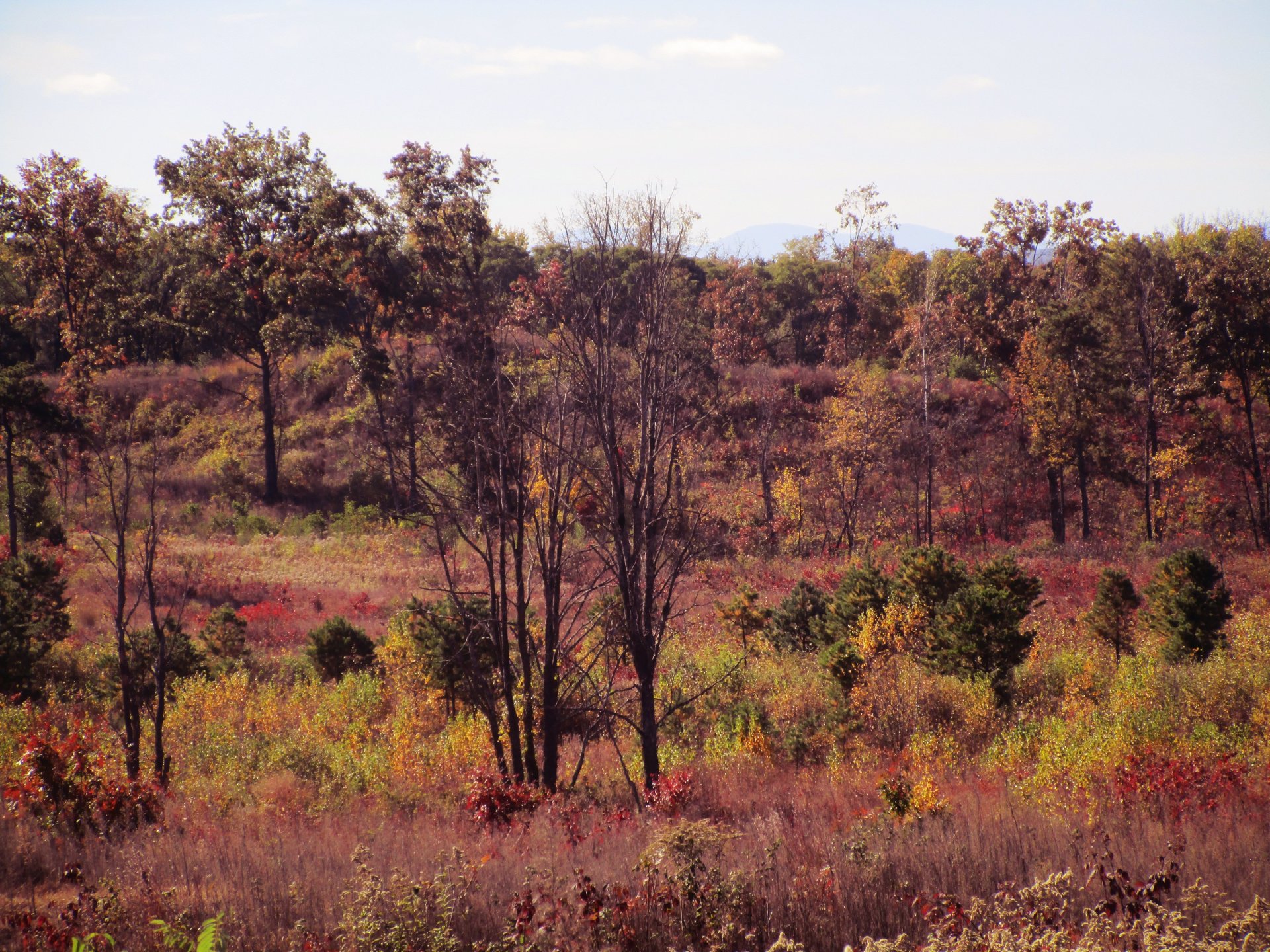DEC reintroduces box turtles in Albany Pine Bush Experiment

Born Free
DEC reintroduces box turtles in Albany Pine Bush Experiment
Reprinted from the Daily Gazette, June 24, 1997, By Paitrick Kurp, Gazette Reporter
COLONIE – Deep in the Albany Pine Bush – some 500 yards, that is, from the New York State Thruway – among the pitch pines, white oaks and chestnut oaks, stands a rickety corral of wooden stakes and chicken wire. The floor of the 400 square foot enclosure is littered with the usual woodland debris -branches, leaf mulch, oak saplings, spent acorns, sweet fern and a plastic bowl of water.
Except for ants, slugs and wood nymph moths, the plot appeared remarkably fauna-free, until a brownish helmet-like creature stirred in the corner.
It measured six or seven inches from tail to elongated neck Perfectly camouflaged, its shell was mottled with irregular yellow splotches like miniature Rorschach tests.
"Oh, they’re beauties, but you can go through an area like this and step right over them. At least that’s what we’re hoping will happen," said Mike Kallaji, fish and wildlife technician with the Endangered Species Unit of the state Departnent of Environmental Conservation.
These beauties are box turtles – Terrapene carolina -absent from the Pine Bush at least since the 1950’s, victims of poachers and drivers. Today, owning a box turtle without a DEC permit is against the law. Though not listed as endangered, they are considered a species of "special concern."
Last Wednesday, Kallaji and his colleagues released six box turtles into the wild. The three males and three females were fitted with penny-sized radio transmitters and antennas, glued around the perimeter of their upper shells.
Turtle tracking
Each transmitter is tuned to a distinct frequency and emits a constant signal. With the aid of a radio receiver and antenna, Kallaji and the others will monitor the turtles, tracking their daily movements and gauging their success at adapting to a once-familiar, now-foreign environment
"We don’t know what to expect This is an experiment. If it works, maybe we’ll do a fullscale reintroduction next year. It may turn out the turtles are unable to do it. Maybe they can’t hibernate," Kallaji said.
All of the turtles came from private citizens who bought them in pet stortes or caught them in the wild. Three came from one man in Delmar; three from owners in Buffalo; one from New York City.
Kallaji is concerned that a cushy life in human captivity has deprived the turtles of their instictive defenses. All seem unnaturally friendly, trusting and pet-like, even permitting their heads and feet to be touches, without retracting.
"I hate to admit it, but the chances for this to succeed are not terribly good," he said.
To acclimate them to the woods, the turtles had been in their Pine Bush corral since June 3. Hiking to the secret location, along with Kallaji, were his boss, Al Breisch; members of the Albany Pine Bush Preserve; and project volunteers.
Slow going
Kallaji opened the gate to the turtle corral and nothing happened.
"It’s kind of anti-climactic. I mean, they’re turtles. You open the door and they don’t do much of anything," Kallaji said.
Breisch examined each turtle for general health – all passed muster.
One male bolted; at least by turtle standards, and covered 15 feet in minutes. He ate a slug. Others seemed content to sit and do nothing.
"We all have to sing a chorus of ‘Born Free,’ you know," Kallaji said.
None of the six box turtles resembled the others. Both their upper and lower shells came in various combinations of yellow, orange and olive on backgrounds of black and brown.
What distinguishes the box turtle from other species – snapping, painted, musk and spotted turtles are all common to the Capital Region – is its plastron, the ventral portion of its shell. In the case of the box turtle, the plastron is hinged at the front and rear.
This creates an effective defense against even the strongest predators, because the animal can seal itself tightly; 1ike a box; when disturbed. Even a knife blade can’t pry open the fortified reptile.
"Otherwise, they have no offensive skills. What they eat are small invertebrates and plants and fruits.," Kallaji said.
Besides humans, the predators that most concern the herpetologists are raccoons, skunks and dogs. The adults are relatively safe, though their legs are at risk (Kallaji often sees three-legged turtles in the wild).
Turtle eggs, usually laid four or five at a time, are highly vulnerable to predators. Courtship and mating start in May, and the female buries her eggs in moist soil over the summer.
Early bloomer.
The box turtle has several reproductive anomalies. The female, after a single mating, can carry viable sperm for up to five years, thus delaying fertilization. Also, both sexes reach sexual maturity between the ages of 5 and 8, but remain fertile throughout their lives. In the case of box turtles, that can mean 60- 0r 70-year-old parents.
"These animals will live a lot longer than most pet owners. They never become senile like we do. They can breed forever," Kallaji said.
Roadkill and loss of habitat, however, pose ongoing threats. Box turtIes are largely land dwelling, though they’ll probably retreat to a nearby creek during the hottest, driest part of the summer.
Even after half an hour, most of the turtles behaved like aimless loiterers. Only one burrowed into a mound of dead leaves.
"I really hope this works. Bringing back a native species is a feel-good thing to do. I’d like to.get school kids involved, and maybe some kind of corporate sponsorship. Nobody hates turtles. They don’t eat crops. Turtles are our friends," Kallaji said.
Printed July 97